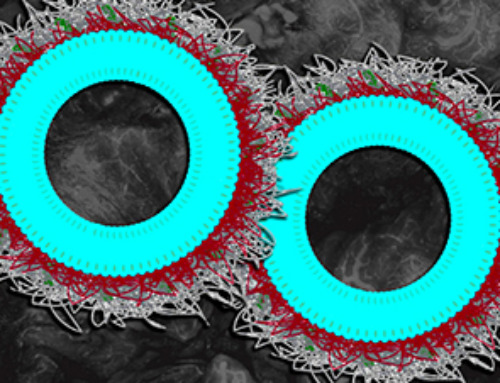Scientists have discovered that the body can naturally dull pain through its own localized “benzodiazepine-like” peptides.
A groundbreaking study led by a University of Leeds scientist has unveiled new insights into how the body manages pain, offering a potential path toward treating long-term pain without relying on addictive opioids.
Professor Nikita Gamper, from the School of Biomedical Sciences at Leeds, and his research team discovered that the human body can generate its own form of natural “sleeping pills” that resemble benzodiazepines. These substances can reduce signals from specific nerves, influencing how intensely pain is felt.
The research, which builds upon earlier studies conducted by Professor Gamper and Professor Xiaona Du of Hebei Medical University in Shijiazhuang, China, could mark a turning point in pain management. With new funding secured for the coming year, the team plans to continue exploring how this biological process could lead to safer, more effective treatments for people suffering from chronic pain.
A New Path Beyond Opioids
Professor Gamper said: “We understand quite a bit about how a person ends up feeling pain, but we can’t do much about it. Despite all the amazing discoveries and textbooks written, opioids are still the gold standard.
“Nothing substantially better than opioids has been produced. If you suffer from pain, you will likely end up with either ibuprofen, which is OK for mild pain, but absolutely does nothing for very strong pain or neuropathic pain; or opioids which are very efficacious but dangerous.”
Benzodiazepines (‘benzos’) are a type of depressant medication commonly prescribed to help with sleep problems, anxiety, and seizures. In their research, Professor Nikita Gamper, Professor Xiaona Du, and Dr. Temugin Berta from the University of Cincinnati discovered that certain cells connected to human nerves, located within structures known as spinal ganglia, can release a peptide that operates in a similar way to benzos.
Because this process takes place only within the peripheral nervous system, it does not cause the entire nervous system to “go to sleep.” As a result, these naturally produced peptides could offer pain relief without the dangerous side effects or risk of addiction associated with opioid drugs.
The study’s results show that nerves are capable of “tuning out” pain signals or limiting how much pain the brain perceives, revealing a potential new mechanism for controlling discomfort at its source.
Turning Down Pain at Its Source
Dr. Ganesan Baranidharan, a consultant in pain medicine in Leeds, said the findings could offer some hope to patients trying to manage daily chronic pain.
He said: “Chronic pain is one of the health service’s biggest problems.
“In clinics we try to manage pain with ‘self management’ – learning to live with pain – or we try to help where we can with physiotherapy, injections, or surgeries. However, some patients will have persistent pain needing medicines, and long-term use of nerve painkillers and opioids can cause significant side effects such as feeling like a zombie, memory impairment, etc.
“While some patients do really well on small dose opioids, we need more options to treat chronic pain. The more we can discover, and find appropriate drugs to treat certain conditions, the better for our patients.”
Toward Safer Pain Treatments
Professor Nikita’s findings – published in the Journal of Clinical Investigation (JCI) – open up the possibility of developing new, targeted medicines that could block pain signals without crossing the blood-brain barrier and affecting other brain functions.
For up to a third of the world’s population, pain is a daily burden, and despite being the primary reason for doctor visits across the world, pain is still poorly treated.
Cincinnati’s Dr. Berta, whose research is sponsored by the NIH HEAL initiative, added: “Millions of people suffer from chronic pain and more than half have trouble finding adequate relief. As pain scientists, we have the opportunity to discover new mechanisms that contribute to the progression of chronic pain and share breakthroughs that may hold promise for new treatment strategies.”
Professor Gamper’s decision to focus his work in this area was strongly influenced by seeing a member of his immediate family suffer with neuropathic pain.
He added: “Pain is an interesting phenomenon to study, but ultimately it’s not curiosity that drives you, it’s the ability or at least opportunity to relieve people from pain.”
The teams in Leeds and Shijiazhuang worked together from the research’s inception, with Dr. Berta in Cincinnati coming on board after the scientists discussed their work at a Society for Neuroscience conference in 2018.
Although the scientists had not previously met, they knew each other’s wor,k and by sharing knowledge, they soon realized they had been working on similar experiments and produced identical results. Dr. Berta believes their work “embodies the collaborative spirit of academic research” and shows how significant advancements in understanding and treating pain can be made when scientists work together.
Professor Du said: “I vividly recall the excitement when Nikita informed me that Temo’s lab had obtained similar primary results to ours, solidifying our decision to pursue the study further.
“I hope that our future collaboration will yield even more and better outcomes.”
New Research Funding
A research team led by Professor Gamper in Leeds has now received £3.5 million in funding from the Medical Research Council and the pharmaceutical industry to look further into their findings. A new project was started in January 2025 and will run for five years, looking more closely at potential markers of neuropathic pain and new approaches for pain management, incorporating this new knowledge about spinal ganglia and the ‘benzo’ peptide.
Reference: “Peripheral gating of mechanosensation by glial diazepam binding inhibitor” by Xinmeng Li, Arthur Silveira Prudente, Vincenzo Prato, Xianchuan Guo, Han Hao, Frederick Jones, Sofia Figoli, Pierce Mullen, Yujin Wang, Raquel Tonello, Sang Hoon Lee, Shihab Shah, Benito Maffei, Temugin Berta, Xiaona Du and Nikita Gamper, 18 June 2024, The Journal of Clinical Investigation.
DOI: 10.1172/JCI176227
Funding: Wellcome Trust, Medical Research Council, Biotechnology and Biological Sciences Research Council, Biotechnology and Biological Sciences Research Council, Horizon 2020 Framework Programme, National Natural Science Foundation of China, Science Fund for Creative Research Groups, NIH/National Institute of Neurological Disorders and Stroke
News
Concerning New Research Reveals Colon Cancer Is Skyrocketing in Adults Under 50
Colorectal cancer is striking younger adults at alarming rates, driven by lifestyle and genetic factors. Colorectal cancer (CRC) develops when abnormal cells grow uncontrollably in the colon or rectum, forming tumors that can eventually [...]
Scientists Discover a Natural, Non-Addictive Way To Block Pain That Could Replace Opioids
Scientists have discovered that the body can naturally dull pain through its own localized “benzodiazepine-like” peptides. A groundbreaking study led by a University of Leeds scientist has unveiled new insights into how the body manages pain, [...]
GLP-1 Drugs Like Ozempic Work, but New Research Reveals a Major Catch
Three new Cochrane reviews find evidence that GLP-1 drugs lead to clinically meaningful weight loss, though industry-funded studies raise concerns. Three new reviews from Cochrane have found that GLP-1 medications can lead to significant [...]
How a Palm-Sized Laser Could Change Medicine and Manufacturing
Researchers have developed an innovative and versatile system designed for a new generation of short-pulse lasers. Lasers that produce extremely short bursts of light are known for their remarkable precision, making them indispensable tools [...]
New nanoparticles stimulate the immune system to attack ovarian tumors
Cancer immunotherapy, which uses drugs that stimulate the body’s immune cells to attack tumors, is a promising approach to treating many types of cancer. However, it doesn’t work well for some tumors, including ovarian [...]
New Drug Kills Cancer 20,000x More Effectively With No Detectable Side Effects
By restructuring a common chemotherapy drug, scientists increased its potency by 20,000 times. In a significant step forward for cancer therapy, researchers at Northwestern University have redesigned the molecular structure of a well-known chemotherapy drug, greatly [...]
Lipid nanoparticles discovered that can deliver mRNA directly into heart muscle cells
Cardiovascular disease continues to be the leading cause of death worldwide. But advances in heart-failure therapeutics have stalled, largely due to the difficulty of delivering treatments at the cellular level. Now, a UC Berkeley-led [...]
The basic mechanisms of visual attention emerged over 500 million years ago, study suggests
The brain does not need its sophisticated cortex to interpret the visual world. A new study published in PLOS Biology demonstrates that a much older structure, the superior colliculus, contains the necessary circuitry to perform the [...]
AI Is Overheating. This New Technology Could Be the Fix
Engineers have developed a passive evaporative cooling membrane that dramatically improves heat removal for electronics and data centers Engineers at the University of California San Diego have created an innovative cooling system designed to greatly enhance [...]
New nanomedicine wipes out leukemia in animal study
In a promising advance for cancer treatment, Northwestern University scientists have re-engineered the molecular structure of a common chemotherapy drug, making it dramatically more soluble and effective and less toxic. In the new study, [...]
Mystery Solved: Scientists Find Cause for Unexplained, Deadly Diseases
A study reveals that a protein called RPA is essential for maintaining chromosome stability by stimulating telomerase. New findings from the University of Wisconsin-Madison suggest that problems with a key protein that helps preserve chromosome stability [...]
Nanotech Blocks Infection and Speed Up Chronic Wound Recovery
A new nanotech-based formulation using quercetin and omega-3 fatty acids shows promise in halting bacterial biofilms and boosting skin cell repair. Scientists have developed a nanotechnology-based treatment to fight bacterial biofilms in wound infections. The [...]
Researchers propose five key questions for effective adoption of AI in clinical practice
While Artificial Intelligence (AI) can be a powerful tool that physicians can use to help diagnose their patients and has great potential to improve accuracy, efficiency and patient safety, it has its drawbacks. It [...]
Advancements and clinical translation of intelligent nanodrugs for breast cancer treatment
A comprehensive review in "Biofunct. Mater." meticulously details the most recent advancements and clinical translation of intelligent nanodrugs for breast cancer treatment. This paper presents an exhaustive overview of subtype-specific nanostrategies, the clinical benefits [...]
It’s Not “All in Your Head”: Scientists Develop Revolutionary Blood Test for Chronic Fatigue Syndrome
A 96% accurate blood test for ME/CFS could transform diagnosis and pave the way for future long COVID detection. Researchers from the University of East Anglia and Oxford Biodynamics have created a highly accurate [...]
How Far Can the Body Go? Scientists Find the Ultimate Limit of Human Endurance
Even the most elite endurance athletes can’t outrun biology. A new study finds that humans hit a metabolic ceiling at about 2.5 times their resting energy burn. When ultra-runners take on races that last [...]




















